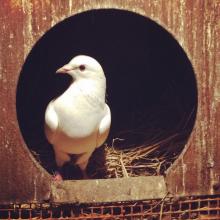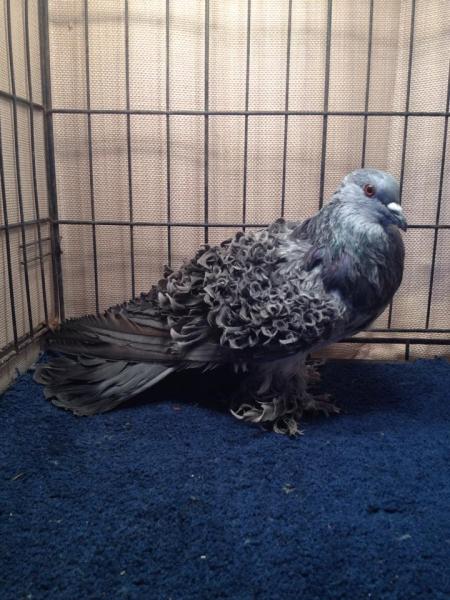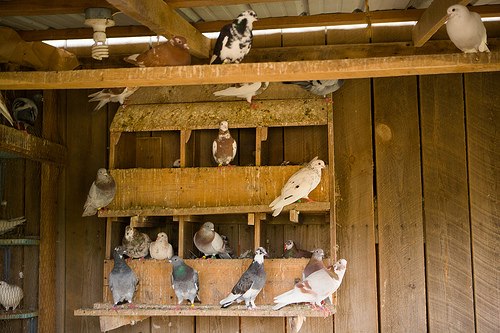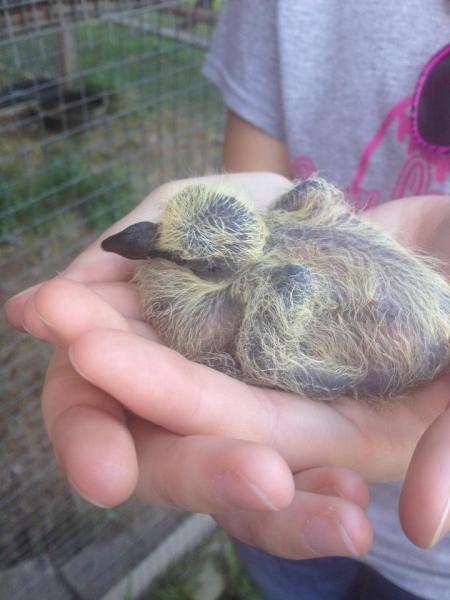Blog Post: Pigeons and Sustainability

Pigeons in many ways epitomize the concept of animal-human interconnected sustainability. They are a bird that we humans have had a symbiotic relationship with since ancient times. We relied on them for several reasons, pigeons didn’t take up great amounts of land yet could still produce meat. Pigeons required little care and attention, essentially one needed only a loft to keep birds in at night to protect from them predators and during the day the birds would fly free. Additionally, the feces of pigeons was used to create the world’s first crude fertilizer thanks to the nitrogen content. Also, humans were quick to capitalize on the pigeon’s homing instinct to create what was the original “Air Mail” (letters attached to a bird’s leg, sent to a recipient in a pigeon’s home locale). Many Eastern cultures still maintain the pigeon-keeping heritage, whereas Western cultures seem to generally consider Pigeons only as pests. However, if you look closely there are many who are reconnecting with pigeons who seem to have found a new place in sustainable agriculture mindset – returning to our roots.

A Frillback pigeon.
I have been raising pigeons since 2008. I currently have two breeds, a feral type breed known as the Rock pigeon (or dove as it is also called) and the Frillback which is a fancy breed used exclusively for shows. The Frillback is a rare pigeon breed that I use for my own show and breed purposes. However, the Rock pigeon is a unique bird that can be compared to the Longhorn cattle or Mustang horse…a bird bred by natural selection. This pigeon breed is a great starter bird that can be found virtually anywhere, as they are cheap or often free to obtain, and are versatile in their use.
With birds in general, you are looking at three main purposes: egg production, meat production, and dual purpose (egg and meat). Chickens and ducks are the first to come to mind, although both require great amounts of space. The beauty of the pigeon is that it is built to fly, giving you the opportunity to cut down on space and save money where you cannot with chickens, ducks, turkeys, etc. I said before that I raise Rock pigeons. This bird can produce a good carcass like that of the other utility breeds (i.e. Kings) while possessing a strong pair of wings for strong flight (i.e. Homers). Rock pigeons are also very prolific birds; they lay eggs and will raise plenty of young giving you a steady supply of meat. Egg consumption is out of the question however, as pigeon eggs are only about an inch in diameter. Pigeon eggs take 17-19 days to incubate, with the birds being ready to eat at 30 days old. At 30 days old, you have a squab which is considered the veal of the pigeon industry. It is quite the delicacy in French cuisine although in my operation I steer clear of that instead focusing on older birds that have had the chance to fly and produce young. Depending on your location and the restaurants in your area, you could be contracted out to supply squab as a featured menu item.
An important note is the space required for pigeons, that being it is very small compared to other farm birds. Unlike the King or Modena utility breeds, the Rock pigeon can be a good sized bird that is still a good flyer. With the ability to fly strongly, and the need to roost kept at a minimum I could easily cut back the space needed to house the birds. The birds will only be in the loft at night to protect from predators, or during the event of bad weather. A pigeon will require only about 2 cubic square feet of space, to sleep and small food and water bowls. Multiply this by however many birds you have with an added 10% total space for more room. I have about 70 Rock pigeons that are housed in an old chicken coop that measures 10 ft x 35 ft. This is a bit larger than what is needed by the rule BUT I do have room to walk in and change feed/water, handle birds, and clean house. Birds are trained to enter and exit through a trap door that remains open during the day and closed at night. The birds will go out and in on their own accord so there is really no need for constant monitoring.

Rock pigeons in their loft.
I said before that my birds were strong flyers. This has given me a great opportunity to support my hobby through a new business venture…special occasion bird release services. Rock pigeons come in a variety of colors and through selective breeding I have been able to obtain a number of solid white birds. The birds, having been conditioned to their loft as a food and rest place, will return to the loft upon release. Pigeons can fly hundreds of miles to return home, however I am training my birds to fly back home within a 60 mile radius. Most bird release services get $400 a bird to be released at weddings and funerals with the closest dealer for me being 2 hours and 120 miles away. Many people are looking for a “wow” factor at weddings, funerals, and special occasions; pigeons provide just that. A special opportunity for those who have had some experience with pigeons, this gives you the opportunity to recoup on expenses of feed and basic care.
Additionally, my Rock pigeons are great foster parents. I have had several of my Rocks raise my rare breed pigeon youngsters for me as well as incubate and hatch several batches of chicks and on one occasion a turkey. With the chicks and other fowl fostered, once hatched they will have to be raised by conventional means (brooder, chick starter, etc.) although with other pigeons you can leave them with the new parents. Pigeons are unique in that they produce “milk” or crop mixture that is regurgitated back to feed young. Pigeons, doves, and parrots are among only a few types of birds to do so.

A squab less than a week old.
The other option with pigeons are to use the adults for meat. Unlike cattle, pigs, and other livestock, pigeons are relatively easy to dress after and provide easier access to meat especially in the winter months when traveling to have your larger animal butchered may not be possible. There are a few ways to do this. The first being to wait until dark when the birds nest; in which case you would catch your bird of choice and wring their neck, and then process it. Another option for those in the country, with the proper credentials, and where regulations allow, would be to use a small gauge shotgun or rifle with non-toxic lead-free shot. In this strategy you would keep the birds you want locked up in the loft and let the less desirable ones fly for the day. As they fly back to the loft to rest, you could shoot them in the air just like what is done in dove hunting. Some people find this method to be more humane as it is less stressful to the animals in the roost, and with a well-aimed shot, the target is down in one try and never knew what hit them. In the squab production, it is standard practice to sever the neck and head to retain carcass quality.
Depending on where you live, bird dog trainers are often known to buy cull birds. In training bird dogs, a live trap is set with a pigeon inside. When the trap is released, the pigeon is released into the air for the bird to fly away. A shooter is ready to shoot the bird, and the dog trainer signals the dog to retrieve the dead bird. Most trainers are training dogs that will be used for upland bird hunts, such as dove, pheasant, and quail, and are always in need of inexpensive cull birds that can be used to aid the dog in retrieving a real bird in practice and not just a dummy. I have heard that some trainers keep the dead birds to eat after the training, or use them to feed the dogs. This is a very effective training method and many trainers prefer to ready their dogs in such a manner. Note: It is illegal in most US states to competitively shoot live birds for sport, although it may be an accepted practice to use for dog training methods if the birds are consumed as well. Word to the wise; check local laws and the intended purpose of any cull bird to make sure actions fall in line with state regulations as well as local bylaws.
Like any animal, pigeons can be a host of numerous diseases and illness. For this reason, cleanliness is a must at all times. Wearing gloves and a dust mask are good options in keeping you safe. Vaccines are available for pigeons to keep them free of disease, and to prevent the spread of disease between animal species. Your ability to keep pigeons will not only rely on your attention but on where you live and area laws on what animals can be kept (especially in city limits). All in all, pigeons have some unique uses and may fit in with your sustainable agriculture initiatives.
For more information about pigeons and their uses, check out these websites:
National Pigeon Association: http://www.npausa.com/
Rock Pigeon Information: http://beautyofbirds.com/rockpigeons.html
American Racing Pigeon Union: http://www.pigeon.org/
General Pigeon Keeping Information: http://www.strombergschickens.com/general_pigeon_information
Basic Pigeon Information: http://www.angelfire.com/ga3/pigeongenetics/BASICPIGEONINFO.html
Dressing Pigeons/Doves: http://www.fieldandstream.com/articles/hunting/birds/2006/10/dress-dove
Processing Squabs: http://www.ehow.com/how_8289500_butcher-squab.html
Category:


































Comments
Thank you for the helpful post, I learn more about pigeons. celebrity heights